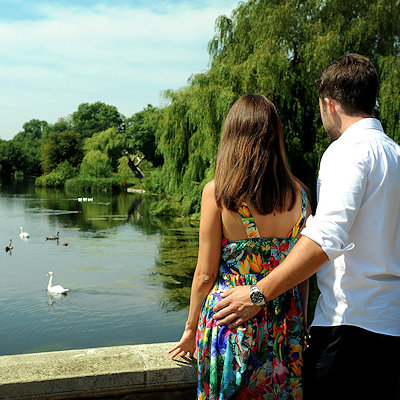
Like us on Facebook
PLACE NAMES


 
|
|
Foots Cray
|

|
|
|
Foots Cray took its name from Godwin Fot, a local Saxon landowner recorded in the Domesday Book of 1086, and from the River Cray that passes through the village. It lay on the old Maidstone Road (now bypassed by the A20 road) leading from London to north Kent. Until the 20th century, Foots Cray dominated the nearby, less ancient hill-top hamlet of Sidcup. The combined area was designated as the Urban District of Foots Cray in 1902. Soon, however, the two settlements' fortunes were reversed, as Foots Cray's traditional industries declined after the First World War, and Sidcup grew rapidly as a commuter town after a railway was built linking it to central London. In 1921 this change was reflected in the renaming of Foots Cray Urban District to Sidcup Urban District. In 1965 both areas became part of the London Borough of Bexley.
The estate of Foots Cray Place was rebuilt about 1754 for Bourchier Cleeve, on the site of the manor, as a Palladian mansion that was attributed to Isaac Ware; it was illustrated in this form in Vitruvius Britannicus iv (1777. Foots Cray Place was remodelled for Benjamin Harenc (1792) by the minor London architect Henry Hakewill, who further remodelled it in 1823 for Nicholas Vansittart, 1st Baron Bexley, who was Chancellor of the Exchequer. Further works were carried out for Lord Bexley by another London architect of equally modest reputation, John William Hiort, who also built Bexley's London house in Great George Street, Westminster. After a fire in 1949, it was demolished in 1950. Now only the stable block remains, but the grounds, known as Foots Cray Meadows, provide a valuable public green space in this south-eastern suburb of London. This 89-hectare park was formed in the early 19th century from two mid-18th-century landscaped parks. It is listed by English Heritage as a Grade II historic park and is a Local Nature Reserve. The "London LOOP" walk passes through Foots Cray Meadows on its way from Old Bexley to Sidcup Place and Petts Wood. There is some industry in an area next to the meadows and bordering the river.
The naval wireless engineer and short-story writer F. G. Loring died at the Old House, Foot's Cray on 7 September 1951, aged eighty-two.
Foots Cray stable block and adjacent walled garden were placed on the English Heritage 'at risk' register but have now been rescued following redevelopment by Morgan Restoration to form a luxury home that was for sale in 2008.
All Saints Church, Foots Cray, is situated in Rectory Lane on the edge of Foots Cray Meadows near the River Cray. The church was built in the 1330s but is believed to stand on the site of an earlier (possibly Saxon) church evidenced by the late 12th century Norman font. The church includes a mid 14th century effigy, two 14th century windows on the south side of the nave and in the chapel, and a brass plate recording the death of Thomas Myton, Rector of Foots Cray, in 1489. The west door-case and porch date from about 1500. In 1638 the church owned eight acres of land which included an orchard, garden and cowyard, a dwelling house, hovel, barn and stable.
In 1863 extensive alterations took place, including the removal of the old box pews, with the church being substantially rebuilt. The nave was extended westwards with the bell tower at the west end of the church left standing on four oak posts so that the bells are now rung from the centre of the aisle. During the enlargement and remodelling of the chancel, the remains of twenty burials were found, as was a brass plate engraved with the date 1440 which still had a bunch of lavender placed underneath it. The stained glass windows date from the second half of the 19th century as do the three bells, although the bells were recast in 1987. In 1995-97 major roof repairs took place to the nave, chancel, chapel and vestry.
The original parish registers dating back to 1559 were stolen in 1948 when vandals broke into the church and threw the church records into the River Cray, but fortunately copies of the register from 1559 to 1832 had been made.
The original churchyard was extended in 1876 courtesy of a donation of one acre of land by Robert Arnold Vansittart, and again in 1885. The churchyard includes an unusual iron stone grave slab which marked the burial of Martin Manning 'Yeoman' in 1656 (although the inscription is no longer legible). The granite Sir John Pender monument was blown over in the hurricane of October 1987 despite its great weight and later re-erected by the Pender family and Sir John's old company Cable & Wireless plc.
In 1996 when contractors were cleaning out the void just above the walls around the nave, they found a Daily Express newspaper dated 29 October 1957 in an envelope signed by the seven workmen who had been installing a gas-fired boiler.The Coca-Cola Company has a large manufacturing and bottling plant in Foots Cray which opened in 1961 and employs 361 people. This plant was where Dasani water was produced.
|
 Feel free to Email me any additions or corrections Feel free to Email me any additions or corrections
LINKS AVAILABLE TO YOUR SITE
| |





